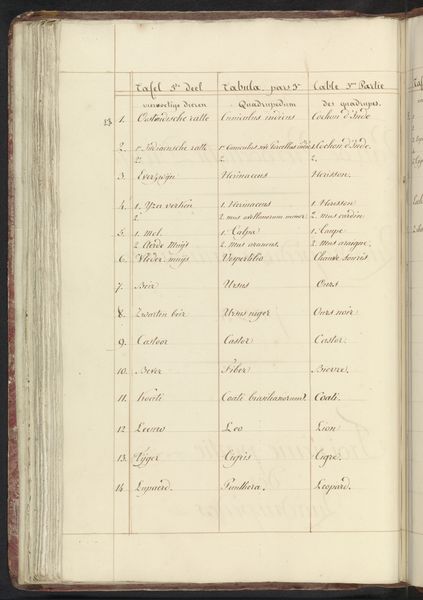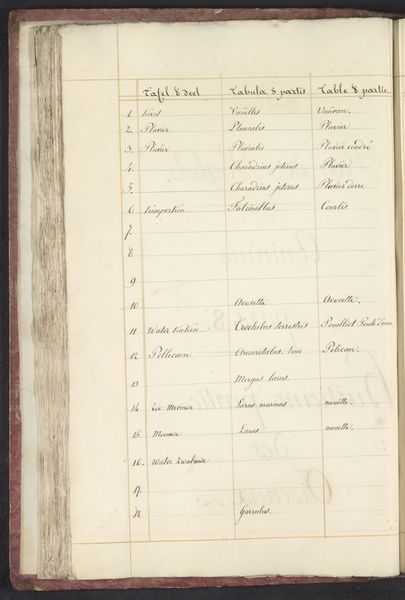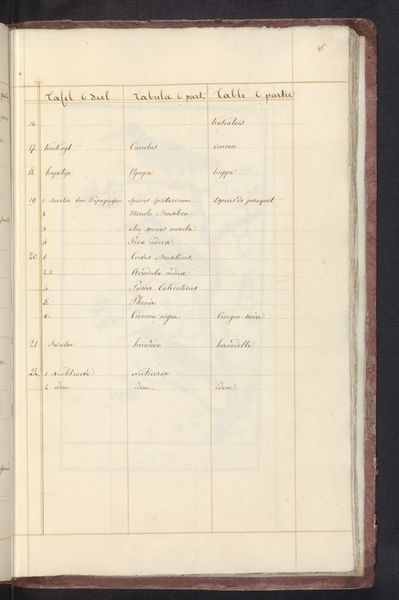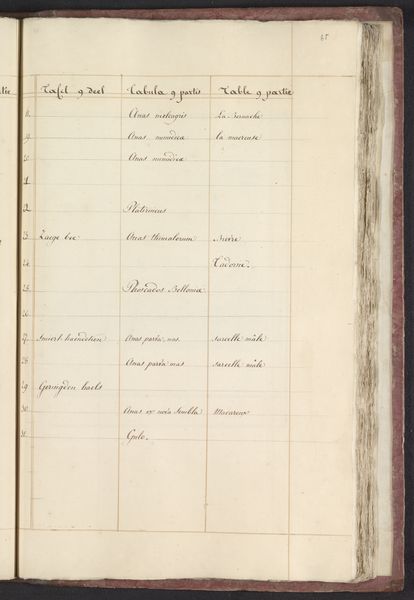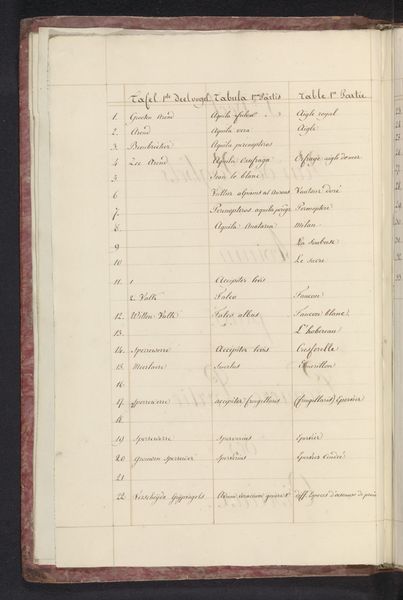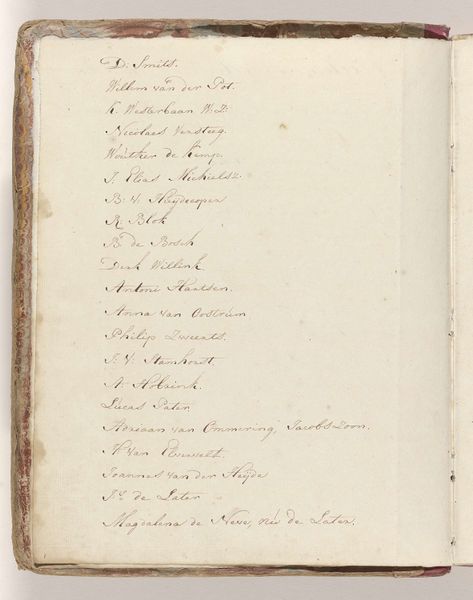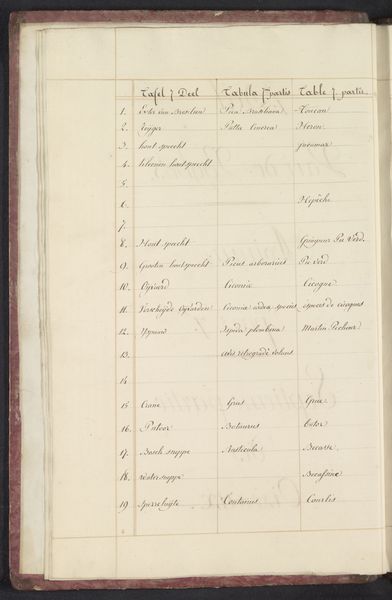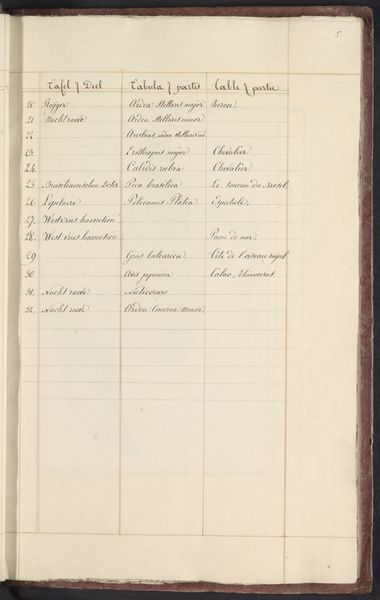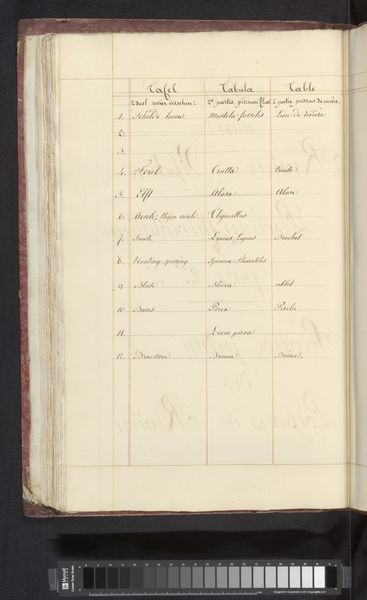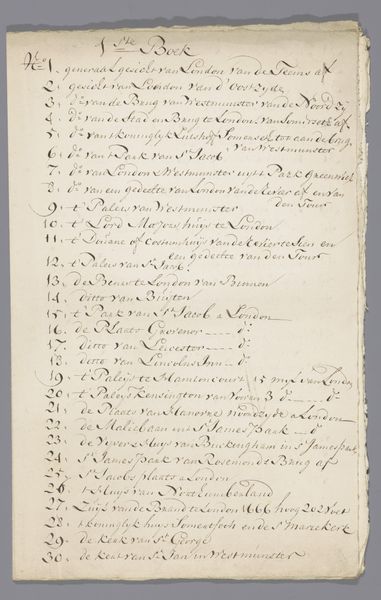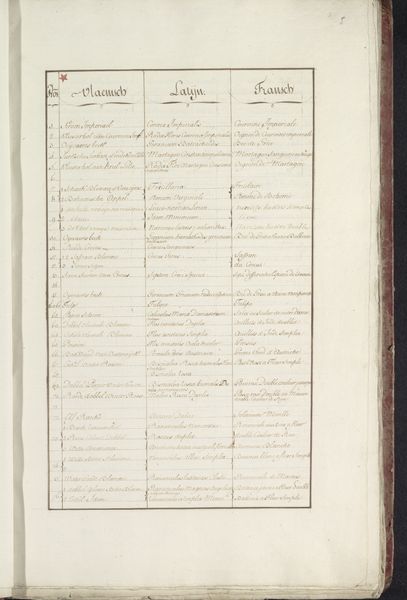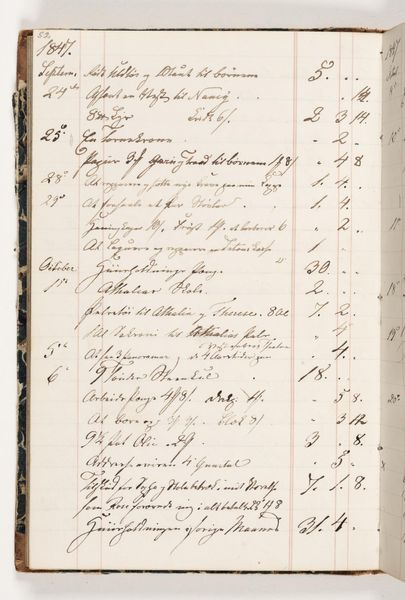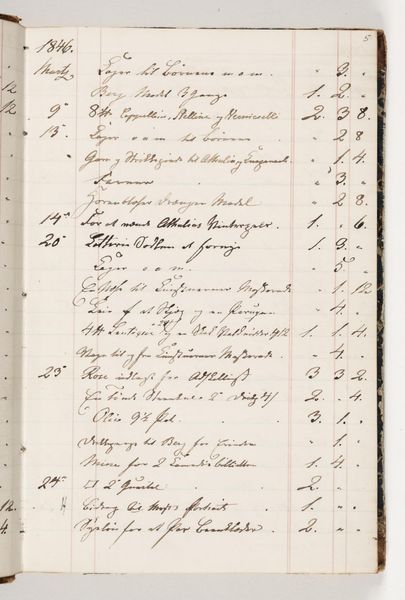
drawing, paper, ink
#
drawing
#
medieval
#
narrative-art
#
paper
#
ink
#
history-painting
#
academic-art
#
realism
Dimensions: height 430 mm, width 270 mm
Copyright: Rijks Museum: Open Domain
Curator: Here we have a page from "Lijst van de reptielen en amfibieën in dit deel" by Joseph van Huerne, created between 1809 and 1814, rendered meticulously in ink on paper. What strikes you first? Editor: It's the starkness, really. The rigid lines forming a grid, the disciplined script… it presents a very ordered, almost sterile view of the natural world. The material itself seems very controlled. Curator: Indeed. Notice how van Huerne deploys the structure of the table itself as a compositional device. The hierarchy of languages—likely Dutch, Latin, and French—shows how information is categorized and controlled through naming. The act of list-making implies a drive for classification, for imposing order onto a potentially chaotic reality. Editor: Precisely! And consider the labor involved in producing such a document. Each entry, painstakingly handwritten. The very process speaks to a specific mode of production, a slow, deliberate engagement with both language and the material of the page itself, the social role of the educated cleric writing and organizing knowledge for this local readership. It reflects a learned and religious tradition, of understanding through transcription and classification. Curator: And look at the specific choices: reptiles and amphibians. These animals occupy a liminal space, between land and water, often viewed with a mix of fascination and fear. Van Huerne, through his formal rendering, tames them, presents them as knowable, definable entities. The academic hand renders it all safe, comprehensible. Editor: Safe, but perhaps sanitized as well. Consider what is left out, there's a material cost in obtaining this knowledge. Who hunted the reptile to study it? And where did the ink come from? Who made the paper? Van Huerne's control over language abstracts this list from the very real circumstances needed for its existence. Curator: An excellent point. By examining the deliberate arrangement and choice of language, alongside the effort in manual reproduction, we arrive at a richer understanding of this document as a tool, that displays an attempt to dominate an understanding of the natural world through order. Editor: Exactly. And recognizing these aspects moves our appreciation beyond simply aesthetic observation, leading to a deeper interrogation of the intellectual and social history embedded in its creation. It reveals the broader means by which natural knowledge was materialized and mediated at the time.
Comments
No comments
Be the first to comment and join the conversation on the ultimate creative platform.
